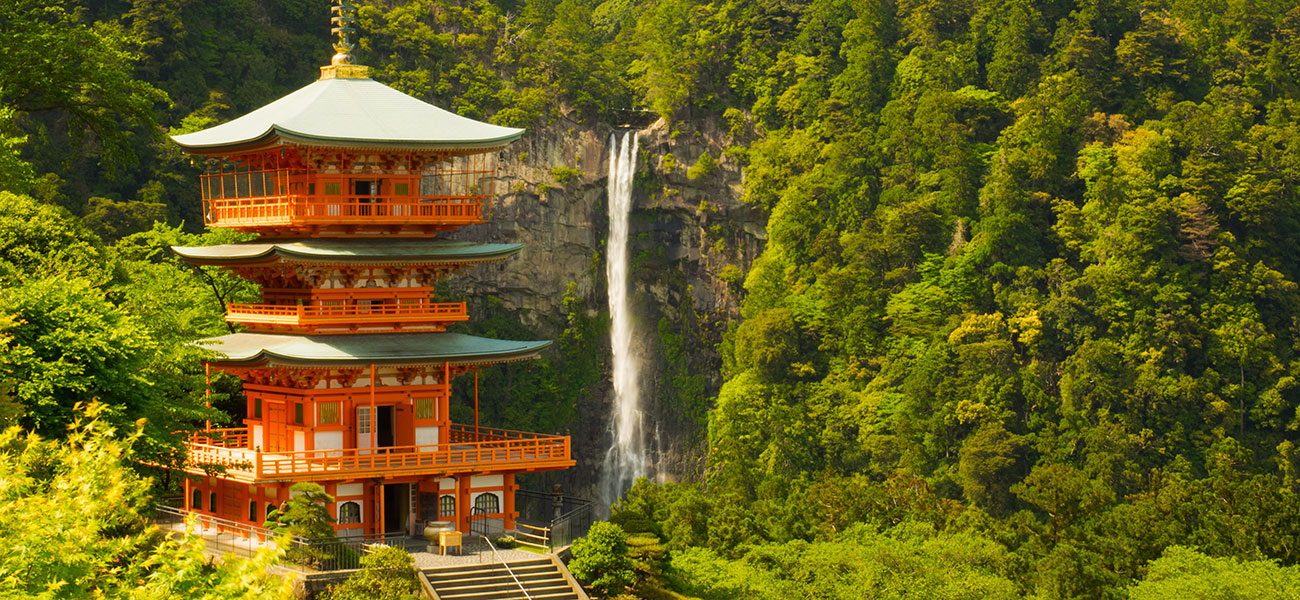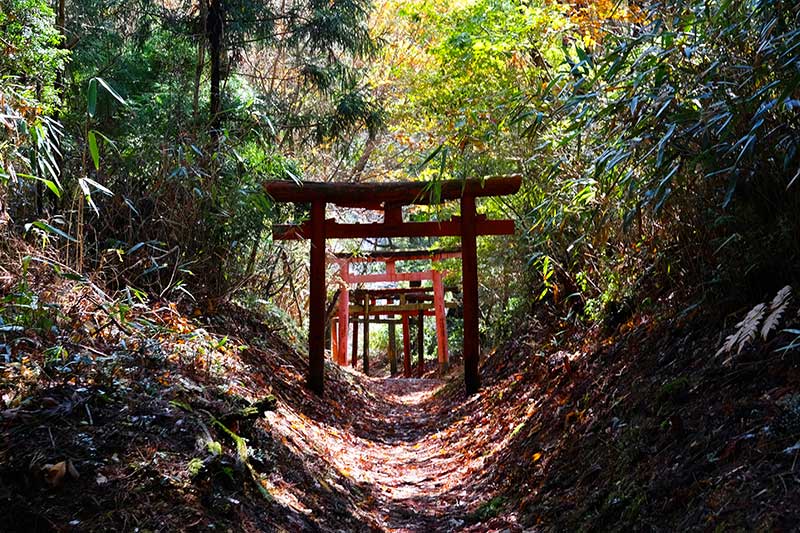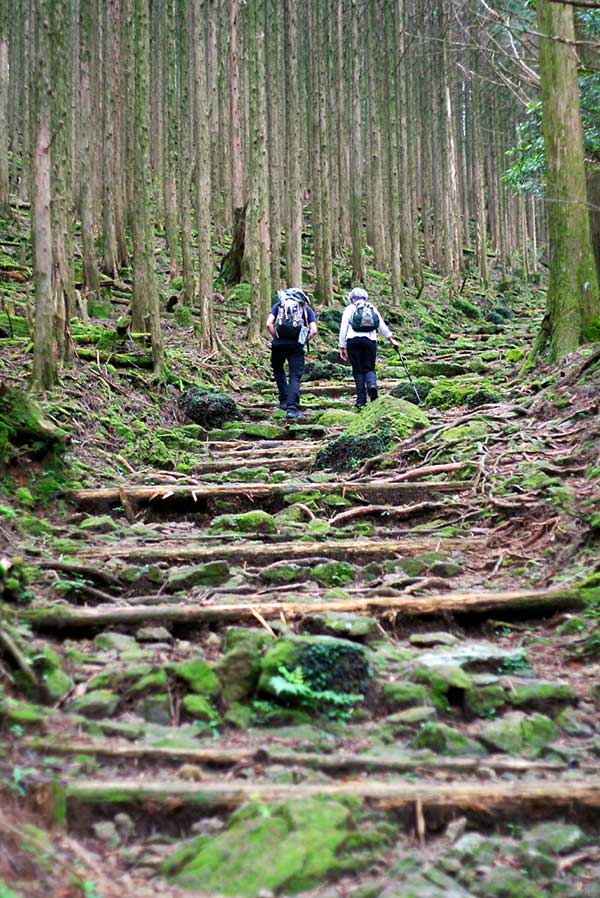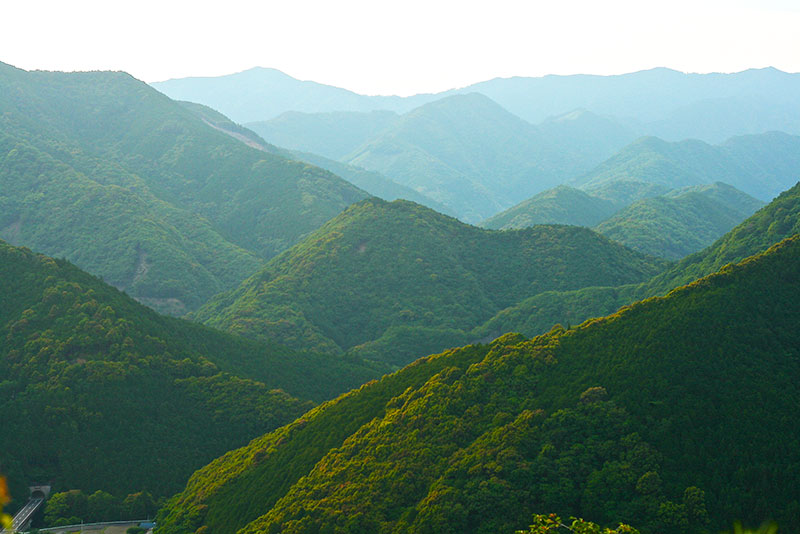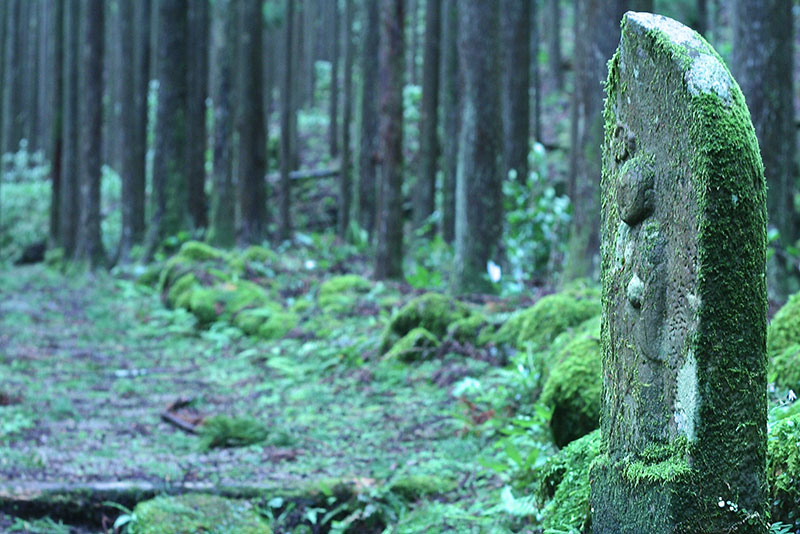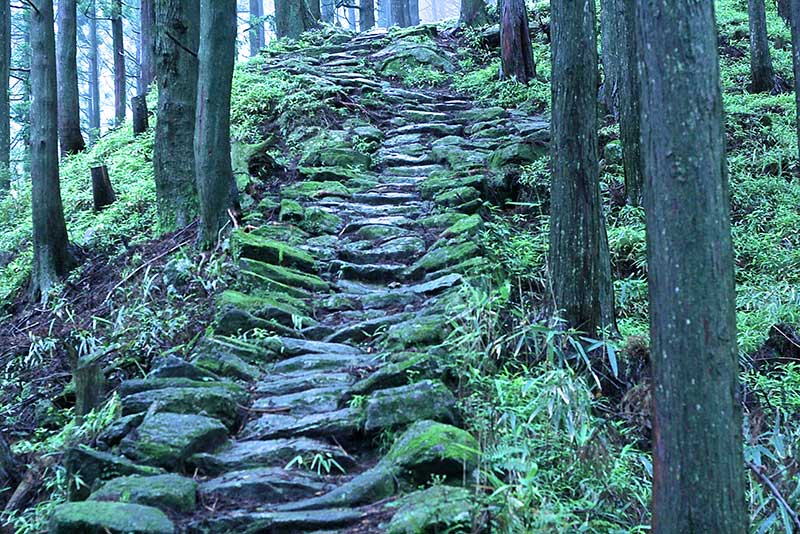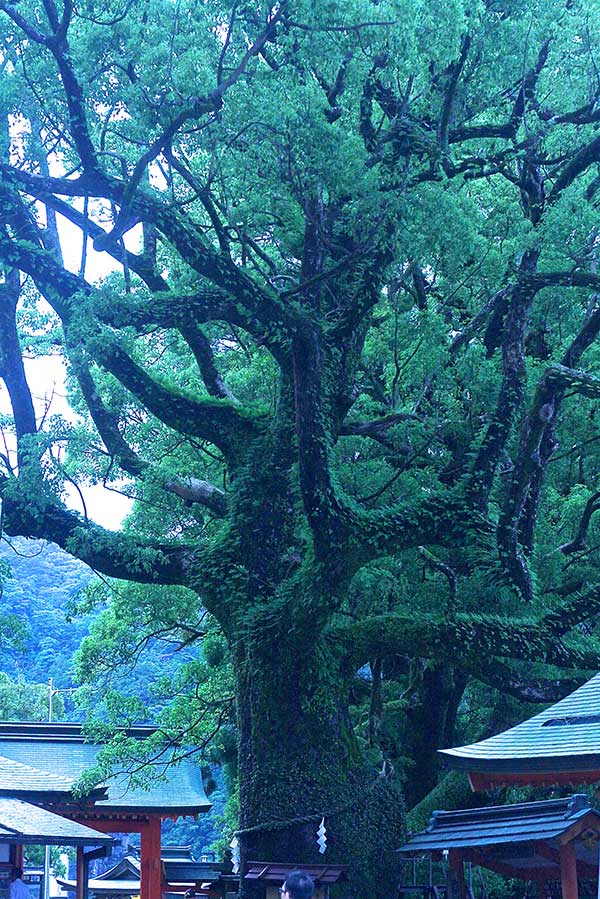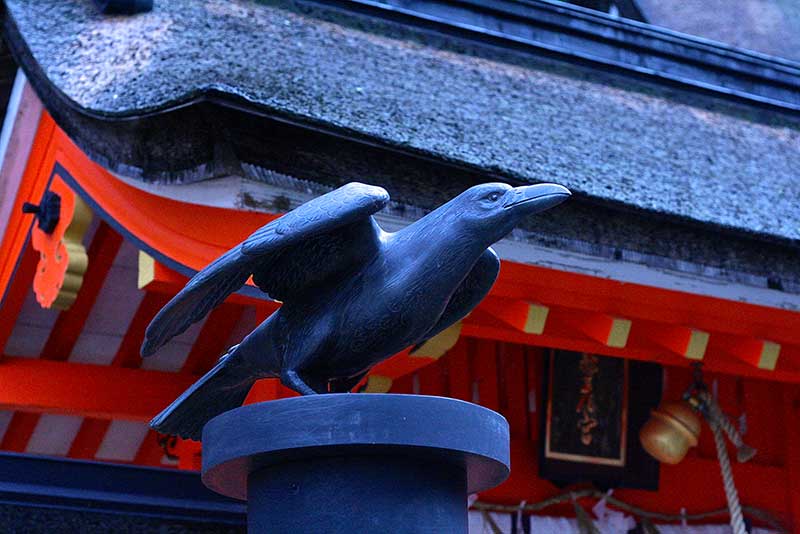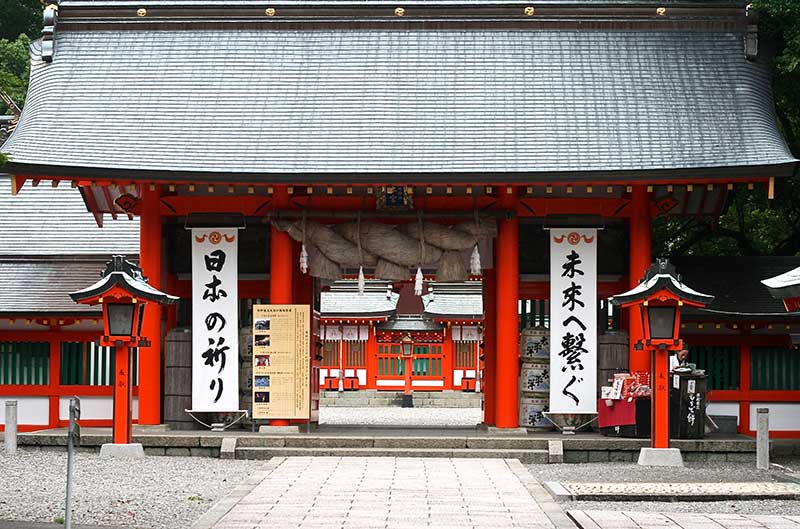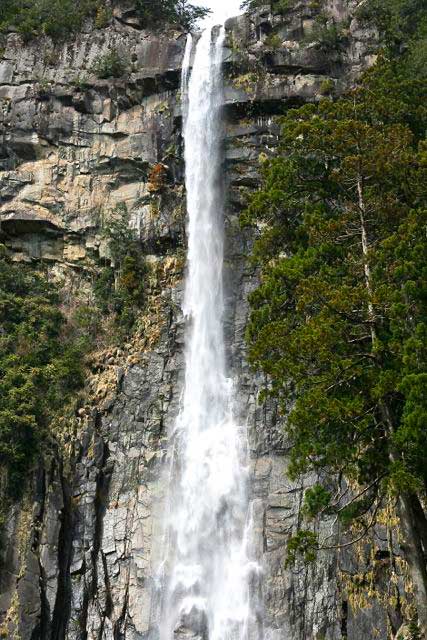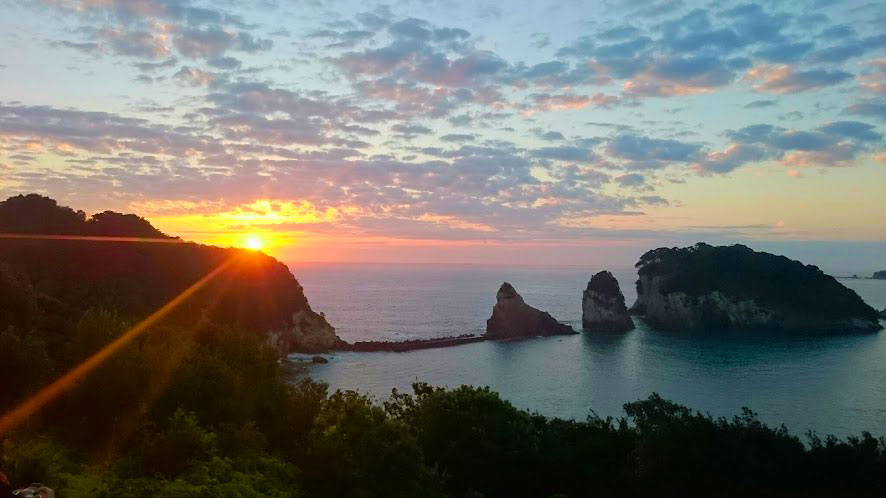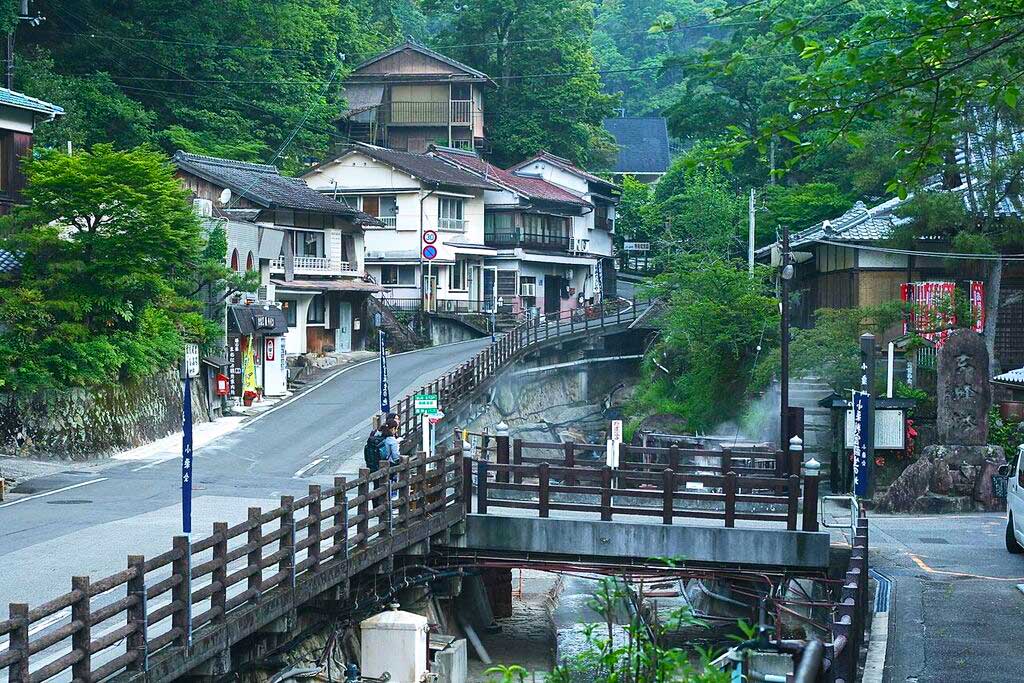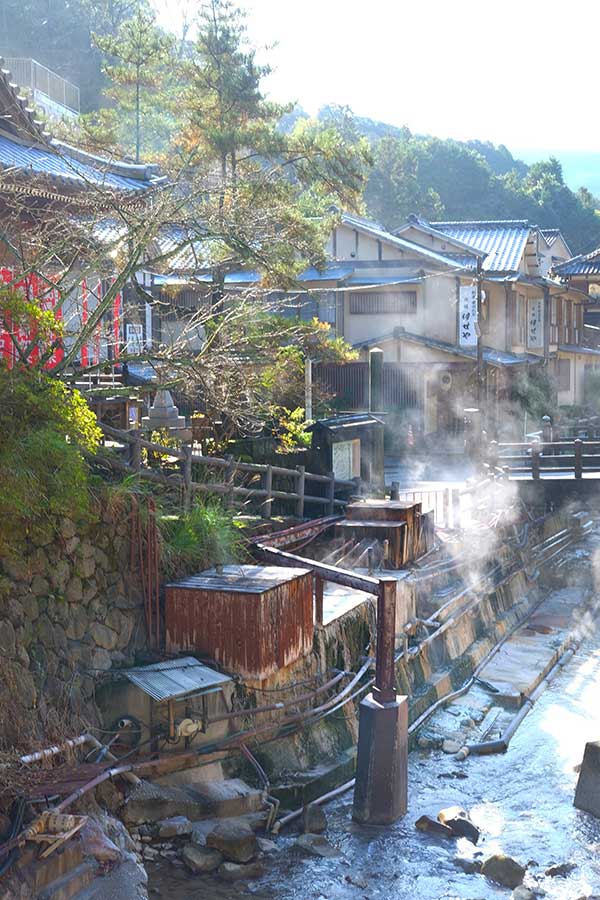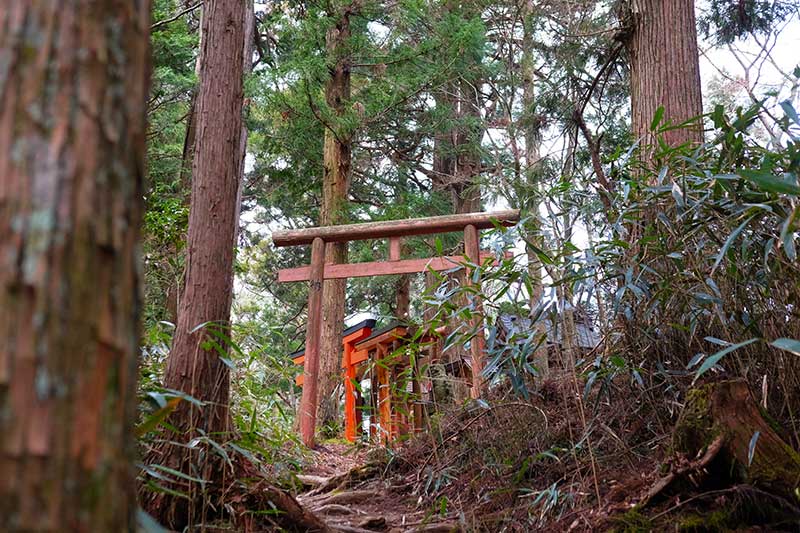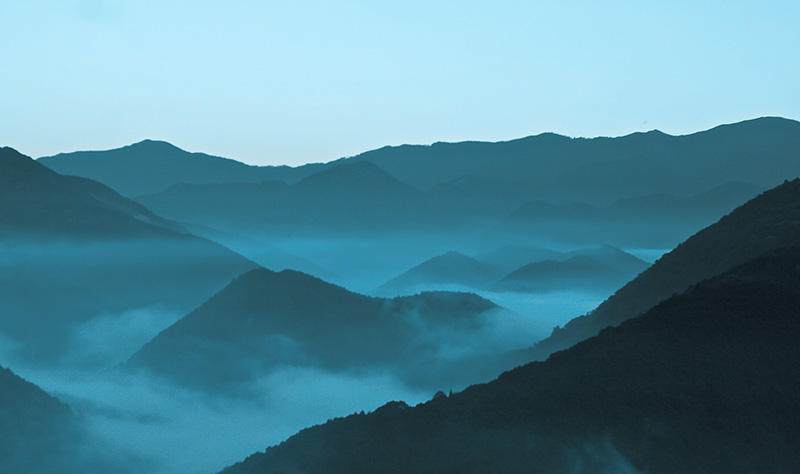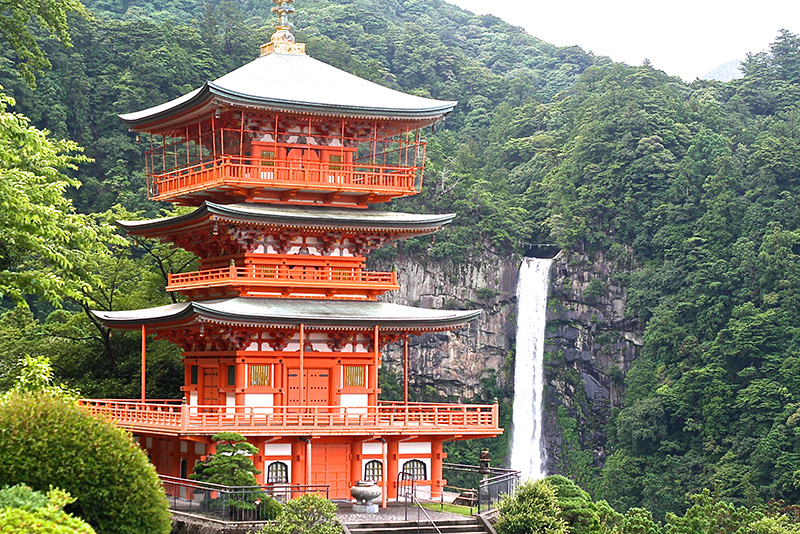A self-guided hiking tour along the sacred Kumano Kodo Pilgrimage.
Self-guided walking on the Kumano Kodo, one of only two UNESCO-registered pilgrimage trails worldwide. Follow ancient trails trod by pilgrims for over 1,000 years through deep forested valleys in remote countryside; accommodation in onsen hot spring hotels and inns, with plentiful local cuisine.
March - June & September - November.
The Kumano Wayfarer is a 7-day, 6-night tour starting in Yuasa and finishing in Shingu. Tour accommodation is in Japanese inns and hotels. Please read more on accommodation here. For more information please contact us.
This is an unescorted walking tour following the Kumano Kodo, an ancient route travelled on foot by emperors, pilgrims and ascetic monks for over a thousand years. Drawn to Kumano’s message of universal acceptance, the devout would hope to attain spiritual rebirth in a landscape deeply connected to the Kojiki, Japan’s myth of creation. Today, pilgrims are few in number, but the route still remains an important part of Japan’s cultural heritage, cared for by those who live and work aside it. UNESCO has awarded the Kumano Kodo World Heritage status; alongside Spain’s Camino de Santiago, it is one of only two pilgrimages in the world afforded this distinction.
The tour starts on the Kii Peninsula at Yuasa, an attractive and historic town. Enjoy an afternoon strolling through its traditional streetscape or walking along a nearby section of the Kumano Kodo over a mountain pass. The following morning, transfer by train and private transport to the start of your walking along the Kumano Kodo’s Nakahechi route. This follows a hilly, winding path primarily through verdant forests that leads to the Kumano Sanzan; namely, Hongu Taisha, Nachi Taisha and Hayatama Taisha. All are sacred grand shrines at the core of the pilgrimage; the first is known for its scenery-dominating, immense torii shrine gate and the second for the iconic setting of its pagoda and waterfall.
Your path, which leads you through charming villages, is lined with a multitude of oji sub-shrines, carved deities and other testaments to the historical and spiritual significance of the Kumano Kodo. Occasionally, the forest opens up to reveal expansive, scenic mountain views, some over neatly tended tea fields and others to the Pacific Ocean.
Accommodation is mostly in family-run inns, some with the distinctive and traditional Japanese surroundings of shoji sliding paper screens and tatami straw mat flooring. Japanese baths, sometimes with hot waters sourced from onsen thermal hot springs, are an excellent way to relax and luxuriate at the end of each day. A special treat is a night at Yunomine Onsen, one of the most venerable hot spring villages found in Japan. Everywhere your hosts provide a warm welcome and feasts of home-cooked, regional cuisine, many of the ingredients of which they or their neighbours have grown or sourced from the surrounding forests.
A Level 4 tour, the Kumano Wayfarer includes some steep, rocky climbs over uneven ground. The materials provided utilise Walk Japan's extensive research of the Kumano Kodo and its expertise derived from over 25 years of leading guided walking tours throughout Japan. We are confident that our Kumano Wayfarer provides an enjoyable and unique experience of the Kumano Kodo pilgrimage route, as well as an intimate experience of Japan and its people.
The Kumano Wayfarer includes easy-to-follow, detailed instructions on how to join and prepare for the tour. Daily walking distances are between 10–25kms (6.2–15.5 miles) and elevation gain averages between 600–1,000m (2,000–3,300ft.). Options are provided to lengthen or shorten the daily itinerary to suit your energy levels. Several passes need to be negotiated along the route, sometimes over uneven and rocky terrain, and care needs to be taken, especially on wet days. Wherever it is inconvenient to take on public transport, your main luggage will be transferred for you between accommodations.
What is included?
A pre-tour pack. Each pack should answer most, if not all, of the questions you may have and includes such details as how to prepare for your Wayfarer Tour, how to travel from your arrival point in Japan to the accommodation on the tour's first night, an accommodation list, and travel advice. Upon receipt of a completed manifest form, your pre-tour pack will be made available for online viewing approximately two months prior to the start date of your tour. It can also be downloaded as a PDF file for offline use.
A Wayfarer Route Booklet. This is provided on arrival at your first night’s accommodation, and is an easily portable booklet. This includes detailed walking directions and logistical information, including maps, photographs and site-specific information such as lunch/cafe recommendations, museum/gallery recommendations and historical points of interest. A rain-resistant pouch and shoulder strap are also provided for ease of carrying the booklet while walking.
Click here for a sample of the Wayfarer booklet.
6-nights’ accommodation, 6 breakfasts, 2 lunches and 6 dinners.
Main baggage transfer between your accommodations.
Rail transport from Yuasa to Tanabe on Day 2.
One reserved taxi transfer from Kii-Tanabe Station to the start of your walk. This transfer includes main luggage forwarding to your first-night accommodation.
In-country (Japan), 24-hour English-language emergency support.
What is not included?
Not included are flights, 4 lunches and drinks with meals, transfers other than those noted in the itinerary.
Please note that Wayfarer self-guided tours sometimes require transfers by public buses and/or trains that are not included in the tour price. This is either because it is not possible to reserve them in advance or to allow maximum flexibility for tour participants. Please contact us for further details.
Please see the itinerary for this tour by clicking on the button found further up this page.

Day 1 Yuasa
Your tour begins with a stay in the quaint, countryside town of Yuasa, located on the western coast of the Kii Peninsula and a charming town famed for being where shoyu soy sauce was first brewed. After checking in at your traditional Japanese accommodation, enjoy a stroll around Yuasa’s picturesque streets and include visits to the Edo Period (1603–1868) shoyu brewery and an early nineteenth-century era public bathhouse, which now serves as the local museum. For those arriving early and with sufficient energy, a walk on the Kumano Kodo’s Kii-ji route, up and over a nearby mountain pass, is recommended. In the evening, enjoy a relaxing and leisurely soak in the onsen thermal hot spring baths in your accommodation before feasting on a delicious traditional meal created by your hosts.
Accommodation: Traditional Japanese inn with onsen hot spring baths.
Meals: Dinner provided.
Total walking: (Optional 7.5km (4.7 miles).
Total elevation gain: (Optional 177m (580ft).
Day 2 Yuasa – Tanabe – Takahara
Transfer by train using the tickets included in your tour to Kii-Tanabe Station, where a reserved vehicle awaits your arrival to transfer you to the start of your walk at Takijiri, deep in the Kumano countryside. If you wish, start your travels on foot by purifying yourself at Takijiri-Oji Shrine the Japanese way with water and a prayer. The Nakahechi section of the Kumano Kodo begins here with a steep, rocky ascent. This takes about 90 minutes but you reach the top in the knowledge that it is one of the harder sections of the tour and also that the walk for the rest of the day is much easier. As you make your way up, the first of numerous remnants of the pilgrimage route’s spiritual heyday, which include sutra mounds and Buddhist statues, help mark the route.
From the top the path follows much gentler undulating terrain to your destination at Takahara, a delightful mountain-side village. A bonus for negotiating this first climb is the mountain views that open up at the top. The accommodation tonight provides more panoramic views over the valley below and across to the mountains of Kumano. Your hosts also provide a warm welcome, soothing baths and an evening feast of local produce.
Accommodation: Guesthouse.
Meals: Breakfast & dinner provided.
Total walking: 4.5km (2.8miles).
Total elevation gain: 396m (1,300ft).
Day 3 Takahara – Chikatsuyu – Tsugizakura – Yunomine Onsen
Enjoy breakfast in the inn before setting out to re-join the pilgrimage. Immediately on leaving Takahara, the route delves once again into forest, climbing gently past the site of a long-disused teahouse. Other reminders of this once popular route, including an ichirizuka distance marker, line the way. A long descent leads you to a remote roadside restaurant in time for lunch. The local delicacy, mehari-zushi, is made from rice and mustard leaf and is highly recommended both for its taste and to satiate the stomach.
A short ascent brings you to the crest of the Hashiori-Toge pass. Here at the top is an unusual stone statue of a noble riding both a horse and cow. Descend along a cobbled path and staircase to Chikatsuyu, a small village where you may restock on supplies, break for coffee and chat to the friendly locals. If you have time, a visit to the local modern art museum is worthwhile for the architecture alone. Designed by the world-famous architectural firm SANAA, this small and intriguing museum holds temporary exhibitions of modern and traditional art. The final stretch of walking today takes you on a short, ascent to Tsugizakura-Oji, famed for its sugi giant cedar trees and a thirst-quenching spring. From here, transfer by bus to your accommodation in Yunomine Onsen where you will spend the next two nights.
Accommodation: Traditional Japanese inn with onsen hot spring baths.
Meals: Breakfast & dinner provided.
Total walking: 13.0 km (8 miles).
Total elevation gain: 703m (2,306ft).
Day 4 Yunomine Onsen – Hongu – Yunomine Onsen
Forest paths connecting remote mountain villages and many panoramic views of the surrounding countryside feature today, on the longest section of the tour. The route climbs over a number of passes before arriving at Fushiogami-Oji, where pilgrims once prostrated themselves on catching their first glimpse of the Hongu Taisha grand shrine, which presides over the valley below. The walking is all down from here to the grand shrine, unless you include a short diversion up to a scenic viewpoint along the way. In contrast to its torii shrine gate, an imposing structure towering 33.9 metres high, the Taisha is composed of simple elegant buildings that are seemingly at one with the surrounding verdant forests.
There are two ways of travelling from here to this evening’s accommodation at Yunomine Onsen, a village set in a valley; either easily, by local bus, or with more exertion on foot over another stiff pass. There are many onsen thermal hot spring baths in Japan and around the world, but only one, found at Yunomine Onsen, that is registered as a UNESCO World Heritage Site. This is in a small innocuous hut found aside a stream in the centre of the village. Onsen were once used for purification rituals in preparation for visiting the Hongu Taisha. They are also a great way to relax after a day’s exertions. Your inn has its own atmospheric baths to be luxuriated in before a grand multi-course evening meal.
Accommodation: Traditional Japanese inn with onsen hot spring baths.
Meals: Breakfast, lunch & dinner provided.
Total walking: 22-25.5km (13.7-15.5miles).
Total elevation gain: 737m (2,418ft).
Day 5 Yunomine Onsen – Ukegawa – Koguchi
Enjoy a hearty breakfast at the inn before transferring by bus (or for those in need of an extra challenge, walking) to the Kogumotorigoe trailhead. From here, walk up to Hyakken-gura, which provides some of the most spectacular views of the tour, which extend back over Kumano. The trail continues on a forest track and eventually descends into Koguchi, an isolated village surrounded by mountains and rivers. Your accommodation tonight is basic but comfortable and your hosts are, as ever, friendly and serve hearty local food.
Accommodation: Lodge.
Meals: Breakfast & dinner provided.
Total walking: 14.5km (9 miles).
Total elevation gain: 602m (1,975ft).
Day 6 Koguchi – Nachi - Katsuura
An early start after breakfast for today’s walk, which begins with a 2.5 hour ascent that rises 800 metres. Here you are more likely to encounter pilgrims, as this climb coincides with the Saigoku Kannon 33-Temple Pilgrimage of Western Japan. The path, through forests and along ridges strewn with ancient, moss-laden boulders, makes this a more challenging day. However, the surroundings, which exude a strong sense of the almost pre-historic spirituality of Kumano, make the effort very worthwhile.
Later, expansive views open up over mountains to the steely-blue Pacific Ocean. From here, a descent brings you to the Nachi Taisha grand shrine and to one of Japan’s classic views, a pagoda with a backdrop of the Nachi-no-Otaki, waterfalls that plunge 133 metres.
The final section today to Katsuura is completed in a relaxed fashion by local bus. Situated on the Pacific Ocean coast, Katsuura is well-known in Japan for the fresh tuna brought to auction at its early morning market. Relax at your accommodation's onsen hot springs before enjoying a final evening feast.
Accommodation: Onsen hot spring resort.
Meals: Breakfast, lunch & dinner provided.
Total walking: 15km (9.3 miles).
Total elevation gain: 1060m (3,478ft).
Day 7 Katsuura – Shingu
A morning visit to Katsuura's fish market, known as the largest fresh tuna auction in Japan (closed Saturdays and public holidays), before transferring by local train to nearby Shingu. Here the last of the Kumano Sanzan grand shrines, Hayatama Taisha, awaits. A final climb, up a short but very steep set of steps, leads to Gotobiki Iwa, a giant rock that is revered as a natural deity.
Your tour itinerary finishes at Shingu Station, where onward journeys are easily made by train.
Accommodation: N/A.
Meals: Breakfast provided.
Total walking: 5km (3 miles).
Total elevation gain: 90m (300ft).
This itinerary is subject to change.
The airport closest to the tour's start at Yuasa is Osaka’s Kansai International Airport. The tour may also be joined from Tokyo’s Narita and Haneda International Airports, Nagoya’s Chubu Airport, and Fukuoka Airport.
-----
FROM OSAKA’S KANSAI INTERNATIONAL AIRPORT (KIX)
Limousine Bus express coaches run to JR Wakayama Station. The journey takes around 40 minutes. Then transfer from Wakayama to Yuasa on the JR Kinokuni Line, which also takes approximately 40 minutes. At Yuasa, you can either walk or taxi to your accommodation.
Note: if staying in Osaka prior to the tour, an easy train transfer may also be made from Shin-Osaka or Tennoji Stations on the Limited Express Kuroshio JR train. The total journey takes approximately 1.5 hours.
-----
FROM TOKYO’S HANEDA AIRPORT (HND)
The Keikyu Line takes you to Shinagawa Station. At Shinagawa Station, change to the Tokaido Shinkansen bullet train to Shin-Osaka before transferring for the train to Yuasa as described above. Please note that you will have to buy separate tickets for the Keikyu and JR trains at Haneda Airport and Shinagawa Station, respectively.
-----
FROM TOKYO’S NARITA AIRPORT (NRT)
Take Japan Rail's Narita Express (NEX) to Tokyo Station. At Tokyo Station, transfer to the Tokaido Shinkansen bullet train to Shin-Osaka before taking the JR Kinokuni Line to Yuasa. The total journey is approximately 6 hours. It is possible to buy a through ticket from Narita Airport to Yuasa Station.
The pre-tour pack includes detailed instructions, including a map, for travel to the accommodation at the start of the tour.
Tour participants are advised not to book themselves out on an early morning flight at the end of the tour on Day 7, as the tour does not end until approximately midday in Shingu. The journey from Shingu to the nearest international airport takes approximately 4 hours.

